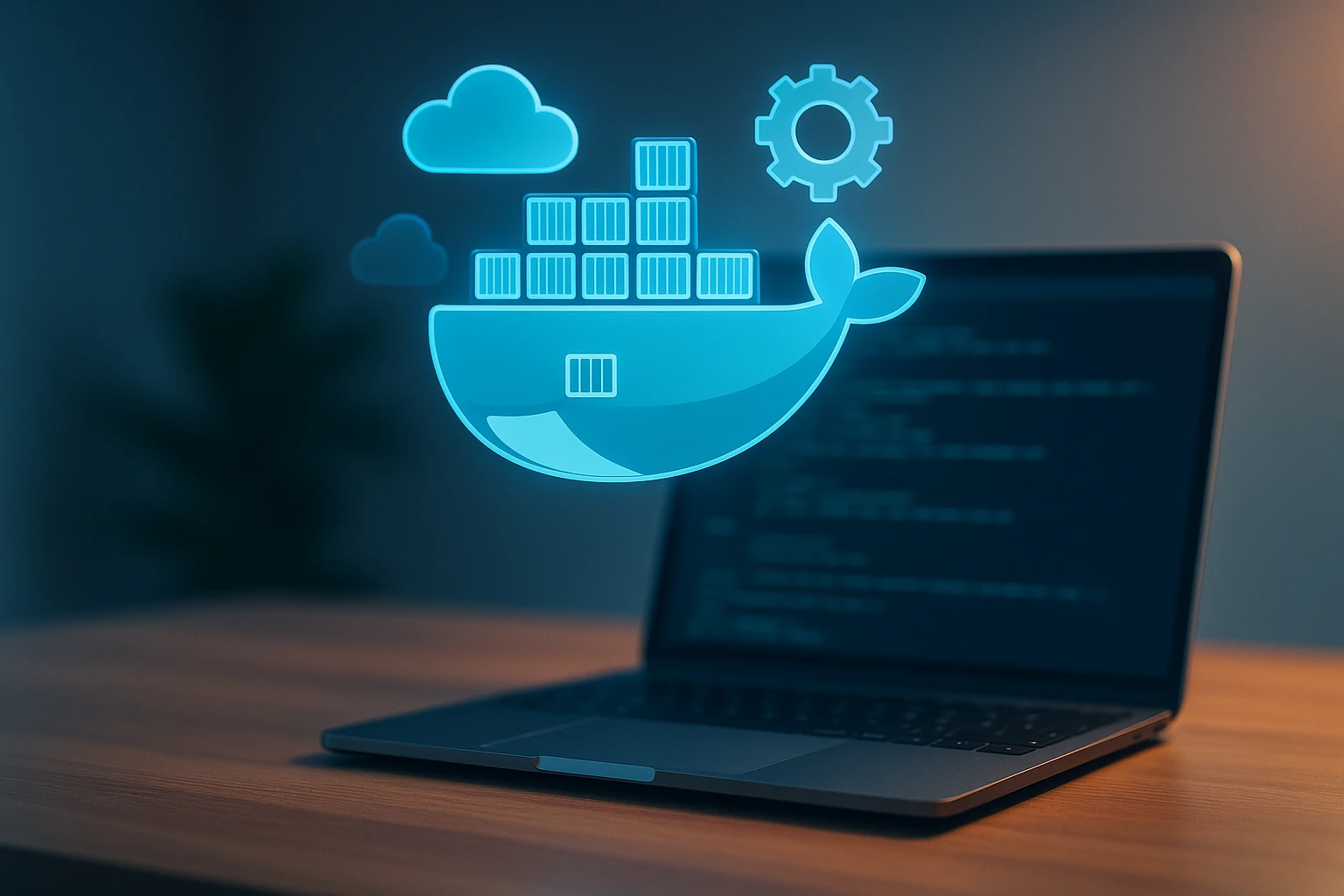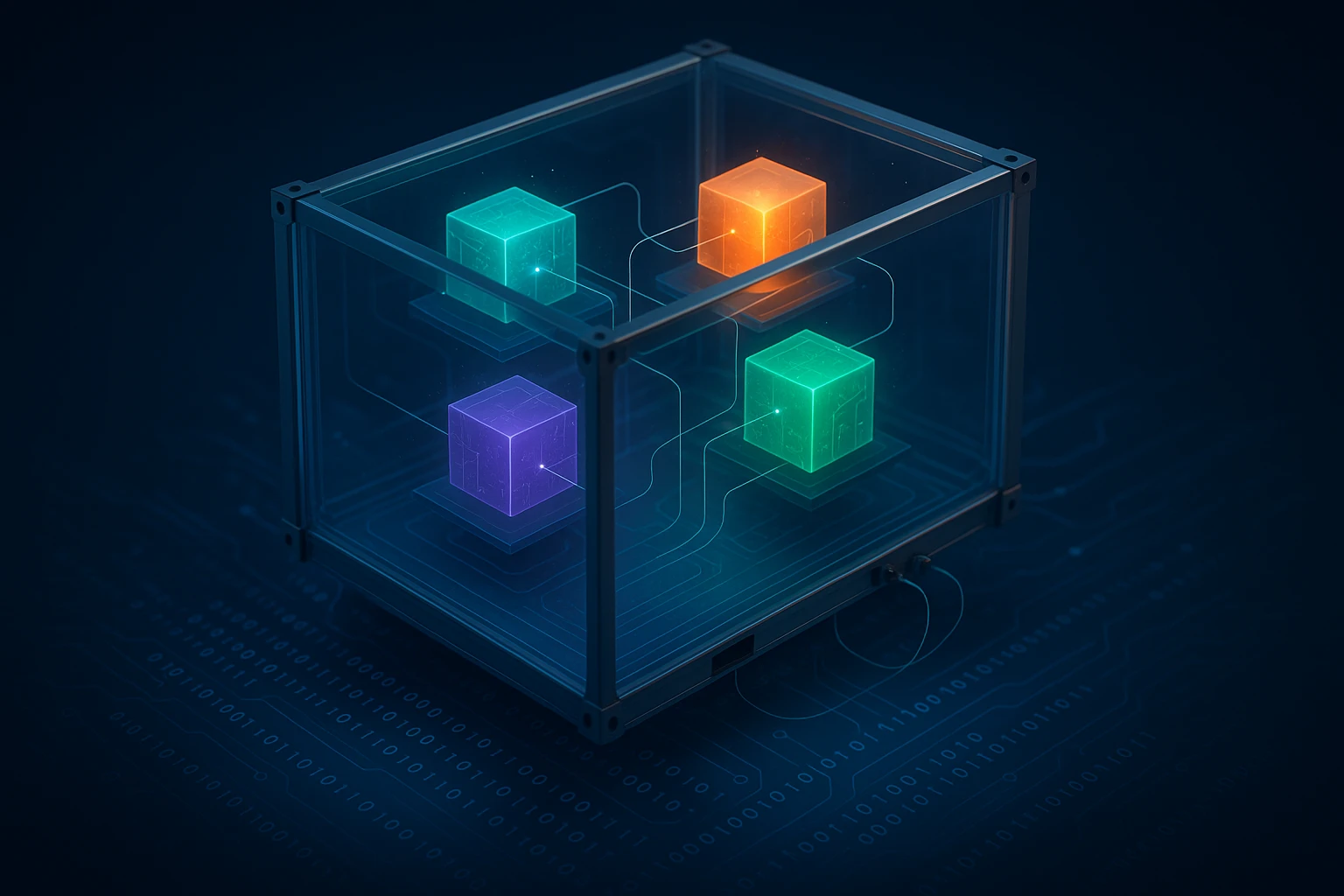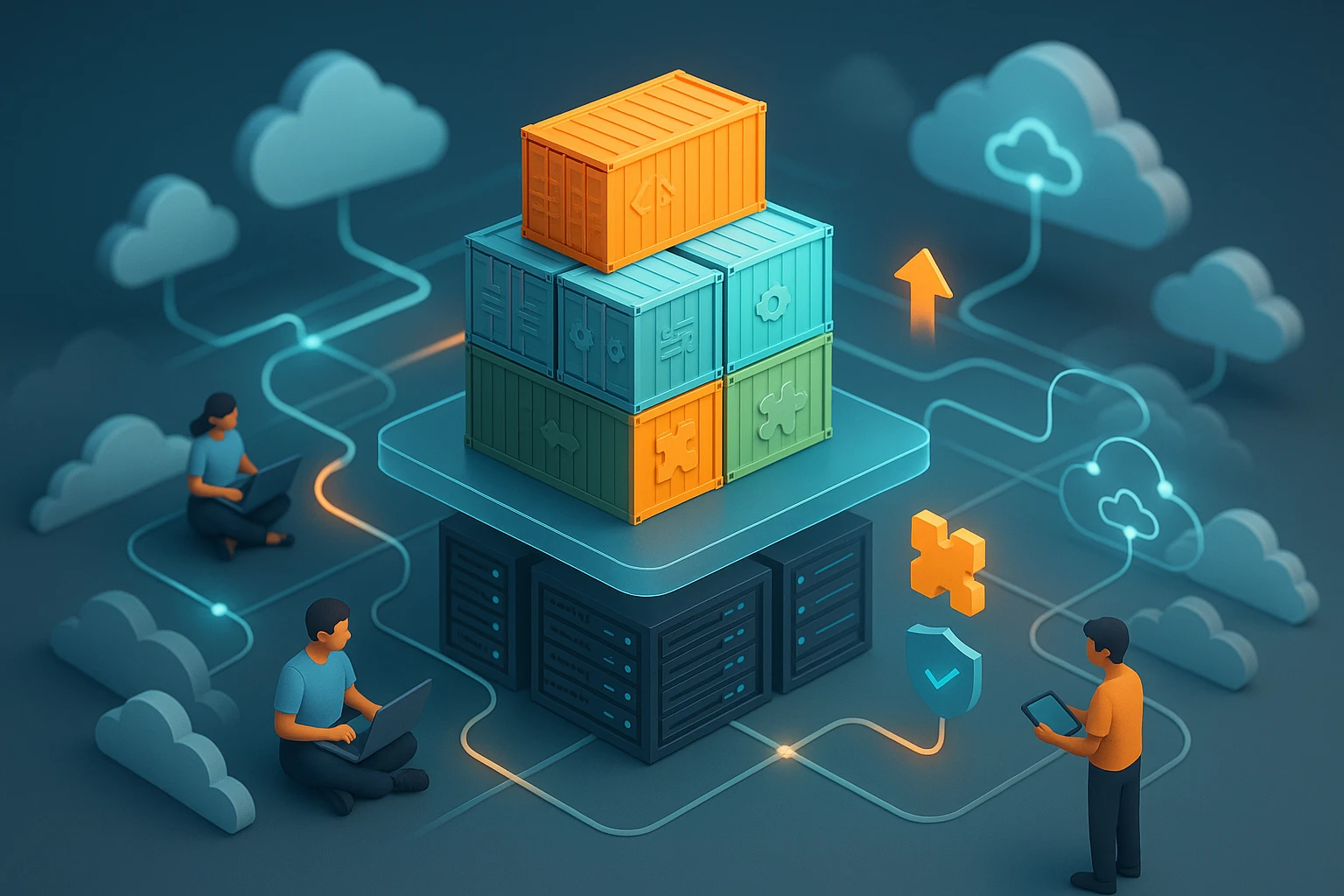Using Azure DevOps for Automated Builds
Azure DevOps pipeline automates build, test, and deploy across repositories and agents, producing artifacts and enabling CI/CD with triggers, stages, approvals monitoring and logs.

Sponsor message — This article is made possible by Dargslan.com, a publisher of practical, no-fluff IT & developer workbooks.
Why Dargslan.com?
If you prefer doing over endless theory, Dargslan’s titles are built for you. Every workbook focuses on skills you can apply the same day—server hardening, Linux one-liners, PowerShell for admins, Python automation, cloud basics, and more.
In today's fast-paced software development landscape, the ability to deliver quality code quickly and reliably has become a competitive necessity rather than a luxury. Organizations worldwide are grappling with the challenge of maintaining consistency across development teams, reducing manual errors, and accelerating their release cycles. Automated builds represent a fundamental shift in how we approach software delivery, transforming what was once a time-consuming, error-prone manual process into a streamlined, repeatable operation that runs with precision every single time.
Automated builds within Azure DevOps refer to the systematic process of automatically compiling source code, running tests, and creating deployable artifacts without manual intervention. This capability sits at the heart of modern DevOps practices, bridging the gap between code commits and production deployments. Azure DevOps provides a comprehensive platform that integrates version control, build automation, testing frameworks, and deployment pipelines into a cohesive ecosystem designed to support teams of any size.
Throughout this exploration, you'll discover how to leverage Azure DevOps to establish robust automated build processes that can transform your development workflow. We'll examine the architectural components that make builds possible, walk through practical implementation strategies, explore advanced configuration options, and address common challenges that teams encounter. Whether you're migrating from legacy systems or building your CI/CD infrastructure from scratch, you'll gain actionable insights that can be applied immediately to improve your software delivery capabilities.
Understanding the Build Pipeline Architecture
The foundation of automated builds in Azure DevOps rests on a sophisticated pipeline architecture that orchestrates multiple components working in harmony. At its core, a build pipeline defines a sequence of operations that transform source code into tested, deployable artifacts. This architecture separates concerns into distinct stages, each with specific responsibilities and dependencies, creating a modular system that can be customized to match virtually any development workflow.
Azure Pipelines operates on a concept of agents—computing resources that execute your build jobs. These agents can be Microsoft-hosted, providing a maintenance-free experience with pre-configured environments, or self-hosted, giving you complete control over the build environment including custom software, network configurations, and hardware specifications. The choice between these options significantly impacts build performance, security posture, and operational overhead.
"The transition to automated builds reduced our integration time from hours to minutes, but more importantly, it gave developers immediate feedback on code quality issues."
Pipeline definitions can be created through two primary approaches: the classic editor, which provides a visual interface for configuring builds, and YAML pipelines, which define build processes as code stored alongside your application source. YAML pipelines have gained significant traction because they enable version control of your build process, facilitate code reviews of infrastructure changes, and support sophisticated branching strategies that align build configurations with code branches.
Key Components of Build Pipelines
- Triggers: Mechanisms that initiate pipeline execution, including continuous integration triggers that run on every commit, scheduled triggers for nightly builds, and manual triggers for on-demand execution
- Stages: Logical boundaries within pipelines that group related jobs, typically representing major phases like build, test, and package
- Jobs: Units of work that run on a single agent, containing one or more steps that execute sequentially
- Steps: Individual operations such as running scripts, executing tests, or publishing artifacts
- Variables: Configuration values that can be referenced throughout the pipeline, supporting environment-specific settings and secrets management
- Artifacts: Files produced by the build process that are published for use by subsequent stages or deployment pipelines
Configuring Your First Automated Build
Setting up an automated build in Azure DevOps begins with connecting your source code repository to the platform. Azure DevOps natively supports Azure Repos Git, GitHub, Bitbucket, and other Git providers, as well as Team Foundation Version Control for legacy systems. The repository connection establishes the foundation for continuous integration, enabling the pipeline to monitor code changes and trigger builds automatically.
When creating a new pipeline, Azure DevOps analyzes your repository structure and recommends pipeline templates based on detected technologies. For a .NET application, it might suggest a template that includes restore, build, and test tasks configured with appropriate MSBuild parameters. For Node.js applications, the recommended template typically includes npm install, build scripts, and test execution with coverage reporting. These templates provide excellent starting points that can be customized to match your specific requirements.
| Build Configuration Aspect | Description | Common Options | Best Practice |
|---|---|---|---|
| Agent Pool | Computing resources that execute build jobs | Microsoft-hosted Ubuntu, Windows, macOS; Self-hosted custom agents | Use Microsoft-hosted for standard builds; self-hosted for specialized requirements |
| Trigger Type | Conditions that initiate pipeline execution | CI (continuous integration), Scheduled, Manual, Pull request validation | Enable CI for main branches; use PR validation for quality gates |
| Build Configuration | Compilation settings for the application | Debug, Release, Custom configurations | Use Release configuration for artifacts destined for production |
| Test Execution | Automated testing during build process | Unit tests, Integration tests, Code coverage analysis | Run unit tests in every build; reserve integration tests for specific branches |
| Artifact Publishing | Making build outputs available for deployment | Pipeline artifacts, Universal packages, Container images | Publish only necessary files; use artifact filters to reduce storage |
Essential Build Tasks and Their Configuration
Build tasks represent individual operations within your pipeline, and Azure DevOps provides an extensive library of pre-built tasks covering common scenarios. The NuGet Restore task downloads package dependencies before compilation, with configuration options for custom feeds, authentication, and package caching. The Visual Studio Build task compiles .NET Framework applications using MSBuild, accepting parameters for solution files, build platforms, and configuration settings.
For modern .NET applications, the .NET Core task provides a unified interface for restore, build, test, and publish operations. This task simplifies pipeline definitions by consolidating multiple operations into a single, configurable step. Similarly, the Node.js Tool Installer task ensures the correct Node.js version is available before executing npm or yarn commands, preventing version-related build failures.
"Implementing proper artifact management transformed our deployment process—we went from hunting for the right build outputs to having a clear, traceable path from commit to production."
Implementing Continuous Integration Practices
Continuous integration represents a fundamental practice where developers frequently merge code changes into a shared repository, with each integration verified by an automated build. This approach detects integration issues early, reduces the complexity of merging changes, and maintains a constantly releasable codebase. Azure DevOps facilitates CI through sophisticated trigger configurations that respond to repository events in real-time.
Branch policies in Azure Repos work synergistically with build pipelines to enforce quality standards before code reaches protected branches. By requiring successful build validation before pull request completion, teams prevent broken code from entering main development branches. These policies can mandate specific builds pass, require minimum code review approvals, and enforce work item linking for traceability.
Optimizing Build Performance
Build performance directly impacts developer productivity and feedback cycles. Slow builds frustrate developers, delay deployments, and reduce the effectiveness of continuous integration practices. Several strategies can dramatically improve build times without compromising quality or reliability.
- 🚀 Parallel job execution: Configure multiple jobs to run simultaneously when tasks have no dependencies, reducing overall pipeline duration
- 💾 Dependency caching: Cache package downloads between builds to avoid repeatedly fetching unchanged dependencies from remote repositories
- ⚡ Incremental builds: Compile only changed components rather than rebuilding entire solutions when possible
- 🎯 Selective test execution: Run comprehensive test suites on main branches while executing only affected tests on feature branches
- 🔧 Build agent optimization: Use self-hosted agents with powerful hardware and pre-installed dependencies for resource-intensive builds
Caching mechanisms in Azure Pipelines can significantly reduce build times for projects with substantial external dependencies. The Cache task stores files between pipeline runs based on configurable cache keys, typically derived from dependency lock files. When the cache key matches a previous run, the cached files are restored instead of being downloaded again, saving considerable time especially for large dependency trees.
Advanced Pipeline Configuration Techniques
As build requirements grow in complexity, Azure DevOps provides advanced capabilities that enable sophisticated workflow orchestration. Multi-stage pipelines separate build, test, and deployment concerns into distinct stages with explicit dependencies and approval gates. This separation creates clear boundaries between different phases of the software delivery lifecycle while maintaining end-to-end visibility.
Template pipelines promote reusability by extracting common pipeline patterns into separate files that can be referenced across multiple projects. A template might define standard build steps for all microservices in an organization, ensuring consistency while allowing individual services to override specific behaviors. Templates support parameters that customize behavior without duplicating pipeline definitions, reducing maintenance overhead as standards evolve.
| Advanced Feature | Use Case | Implementation Approach | Considerations |
|---|---|---|---|
| Matrix Builds | Testing across multiple configurations simultaneously | Define strategy matrix with platform, framework, or environment variables | Can consume significant parallel job capacity; prioritize critical combinations |
| Service Connections | Secure authentication to external services | Configure OAuth, service principal, or token-based connections | Regularly rotate credentials; use managed identities when available |
| Variable Groups | Sharing configuration across multiple pipelines | Create variable groups in Library; link to pipelines as needed | Avoid storing secrets directly; integrate with Azure Key Vault |
| Deployment Gates | Automated quality checks before progression | Configure pre/post-deployment conditions with Azure Monitor queries | Balance automation with necessary manual approvals for compliance |
| Pipeline Decorators | Injecting steps into all pipelines organization-wide | Develop custom extensions that add security scanning or compliance checks | Test thoroughly; decorators affect all pipelines and can cause widespread issues |
Integrating Security Scanning and Compliance
Security considerations must be embedded throughout the build process rather than treated as an afterthought. Azure DevOps integrates with numerous security scanning tools that analyze code for vulnerabilities, license compliance issues, and security misconfigurations. Static Application Security Testing (SAST) tools examine source code for common vulnerabilities like SQL injection or cross-site scripting, providing detailed reports with remediation guidance.
"Embedding security scans directly into our build pipeline shifted security left in our development process—vulnerabilities are now caught and fixed before code review rather than discovered in production."
Dependency scanning analyzes third-party packages for known vulnerabilities, comparing package versions against security advisory databases. When vulnerabilities are detected, the build can be configured to fail, preventing vulnerable code from progressing through the pipeline. This automated governance ensures security standards are consistently enforced without relying on manual reviews.
Managing Build Artifacts and Outputs
Artifacts represent the tangible outputs of your build process—compiled binaries, container images, deployment packages, and test results. Proper artifact management ensures these outputs are versioned, traceable, and readily available for deployment pipelines. Azure DevOps provides multiple artifact storage mechanisms, each optimized for different scenarios and consumption patterns.
Pipeline artifacts offer lightweight, high-performance storage for files that flow between pipeline stages. These artifacts are automatically cleaned up based on retention policies, preventing unbounded storage growth. For artifacts that need to be consumed across multiple pipelines or retained long-term, Universal Packages provide versioned storage with semantic versioning support and fine-grained access control.
Artifact Publishing Strategies
The Publish Build Artifacts task makes files available to subsequent stages or deployment pipelines. Configuration options include the path to publish, the artifact name for reference in later stages, and the publication location. Best practices suggest publishing only necessary files rather than entire build directories—this reduces storage consumption and accelerates artifact download times in deployment stages.
Container images represent a specialized artifact type that packages applications with their runtime dependencies. Azure Pipelines integrates seamlessly with Azure Container Registry and other container registries through the Docker task. This task handles image building with Dockerfile specifications, tagging with build numbers or commit hashes for traceability, and pushing to registries with proper authentication.
"Proper artifact versioning and retention policies saved us from storage nightmares—we can always trace back to the exact build that produced any deployment while keeping storage costs manageable."
Troubleshooting Common Build Issues
Build failures are inevitable in any development environment, and effective troubleshooting skills separate productive teams from those constantly blocked by pipeline issues. Azure DevOps provides comprehensive logging that captures every command executed during builds, including stdout and stderr streams, task-specific diagnostics, and system-level information about the build agent environment.
When builds fail, the first diagnostic step involves examining the build logs for error messages and stack traces. The Azure DevOps interface highlights failed tasks and provides expandable log sections that reveal detailed execution information. Common issues include missing dependencies, incorrect file paths, insufficient permissions, and environment configuration mismatches between development machines and build agents.
Common Build Failure Scenarios
- Dependency resolution failures: Package feeds are unreachable, authentication is misconfigured, or package versions specified in lock files no longer exist
- Compilation errors: Code that compiles locally fails on build agents due to different SDK versions, missing build tools, or platform-specific dependencies
- Test failures: Unit or integration tests fail due to environment differences, timing issues in parallel execution, or dependencies on external services
- Timeout issues: Builds exceed configured timeout limits due to performance problems, infinite loops, or resource contention
- Artifact publishing failures: Insufficient storage space, permission issues, or attempts to overwrite immutable artifacts
- Agent capacity exhaustion: All available agents are busy, causing builds to queue indefinitely
Enabling system diagnostics provides additional logging detail that can illuminate obscure issues. This verbose logging mode captures agent preparation steps, variable resolution, and internal pipeline operations that are normally hidden. While system diagnostics generate substantial log output, they frequently reveal configuration issues that would otherwise remain mysterious.
Scaling Build Infrastructure for Enterprise Needs
As organizations grow and build volumes increase, infrastructure scaling becomes critical to maintaining developer productivity. Microsoft-hosted agents provide a simple starting point, but enterprise scenarios often require self-hosted agents to meet specific requirements around security, performance, or specialized software dependencies. Self-hosted agents can be deployed on physical servers, virtual machines, or container orchestration platforms like Kubernetes.
Agent pools organize build agents into logical groups that can be assigned to specific projects or pipelines. This organization enables resource allocation strategies where critical pipelines receive dedicated agent capacity while less time-sensitive builds share a common pool. Pool-level permissions control which teams can consume agent resources, preventing resource contention between departments.
"Implementing dedicated agent pools for different application tiers eliminated our build queue bottlenecks—critical services get immediate build capacity while batch jobs use shared resources during off-peak hours."
Monitoring and Optimizing Pipeline Performance
Azure DevOps provides analytics capabilities that reveal pipeline performance trends, failure patterns, and resource utilization metrics. The Pipeline Analytics dashboard visualizes build duration over time, success rates by branch, and task-level performance breakdowns. These insights identify optimization opportunities and highlight deteriorating performance before it significantly impacts productivity.
Build retention policies automatically clean up old build records and artifacts based on configurable rules. Default policies retain builds for a limited period, but specific builds can be marked for indefinite retention when they represent significant milestones or are deployed to production environments. Proper retention configuration balances audit requirements with storage costs, ensuring important builds remain accessible while preventing unbounded growth.
Integrating Third-Party Tools and Extensions
The Azure DevOps ecosystem extends far beyond built-in capabilities through a rich marketplace of extensions that integrate specialized tools and services. These extensions add custom build tasks, dashboard widgets, service hooks, and pipeline decorators that enhance functionality without requiring custom development. Popular extensions cover code quality analysis, security scanning, deployment targets, and notification services.
Installing extensions from the marketplace requires organization-level permissions, and administrators should carefully review extension permissions and publisher reputation before installation. Extensions can access project data, modify pipeline behavior, and interact with external services, making security evaluation essential. Many enterprises maintain approved extension lists that balance functionality needs with security requirements.
Essential Extension Categories
- 📊 Code quality and analysis: SonarQube, CodeScene, and other static analysis tools that provide detailed code quality metrics and technical debt tracking
- 🔒 Security scanning: WhiteSource, Snyk, and Checkmarx extensions that identify vulnerabilities in code and dependencies
- 🚀 Deployment targets: Specialized deployment tasks for platforms like AWS, Google Cloud, Kubernetes, and serverless environments
- 📢 Notifications and collaboration: Slack, Microsoft Teams, and email integrations that provide build status updates in team communication channels
- 🎨 Reporting and visualization: Custom dashboard widgets that display build metrics, test results, and deployment status
Implementing Build Pipeline Best Practices
Successful build automation requires more than technical configuration—it demands organizational practices that support maintainability, reliability, and continuous improvement. Pipeline definitions should be treated as code, subject to the same review processes and quality standards as application code. Storing YAML pipeline definitions in source control enables version history, facilitates collaborative editing, and ensures pipeline configurations evolve alongside application code.
Documentation within pipeline definitions improves maintainability significantly. YAML comments explain non-obvious configuration choices, document dependencies between stages, and provide context for future maintainers. Variable names should be descriptive and follow consistent naming conventions across pipelines, making configurations self-documenting and reducing cognitive load when troubleshooting issues.
Quality Gates and Build Validation
Quality gates establish objective criteria that builds must meet before progressing through the pipeline. These gates might require minimum code coverage percentages, zero high-severity security vulnerabilities, or successful execution of integration test suites. Implementing quality gates shifts quality assurance left in the development process, catching issues when they're cheapest to fix rather than discovering them in production.
Build validation policies in Azure Repos enforce quality gates at the pull request level, preventing code that fails builds from being merged. These policies can require specific builds to succeed, mandate code review approvals, and link work items for traceability. The combination of automated validation and human review creates a robust quality assurance process that maintains code quality without creating excessive friction.
Migrating Legacy Build Systems
Organizations with existing build infrastructure face unique challenges when adopting Azure DevOps. Legacy systems might use proprietary build scripts, depend on specific server configurations, or integrate with tools that lack Azure DevOps equivalents. Successful migration requires careful planning, incremental transition strategies, and parallel operation periods where both old and new systems run simultaneously.
Assessment begins with cataloging existing build processes, identifying dependencies, and evaluating which components can be directly translated versus requiring redesign. Build scripts written in PowerShell, Bash, or other scripting languages typically migrate easily to Azure Pipelines through script tasks. Proprietary build tools might require custom task development or replacement with Azure DevOps equivalents.
Migration Strategies and Approaches
The strangler pattern provides an effective migration approach where new builds are gradually created in Azure DevOps while legacy systems continue operating. Teams select low-risk projects or new features as initial migration candidates, gaining experience with Azure DevOps while maintaining existing production builds. As confidence grows, additional projects migrate until the legacy system can be decommissioned.
Parallel operation during migration validates that new builds produce identical artifacts to legacy systems. Automated comparison tools can verify binary equivalence, ensuring the migration doesn't introduce subtle differences that might cause production issues. This validation phase provides confidence that the new system is production-ready before cutting over completely.
How do I choose between Microsoft-hosted and self-hosted agents for my builds?
Microsoft-hosted agents are ideal for standard build scenarios where you need minimal maintenance overhead and can work within the pre-installed software catalog. They're automatically updated, provide clean environments for every build, and eliminate infrastructure management. Choose self-hosted agents when you need specific software versions, specialized hardware like GPUs, access to internal network resources, or want to optimize costs for high-volume builds. Many organizations use a hybrid approach with Microsoft-hosted agents for most builds and self-hosted agents for specialized scenarios.
What's the difference between classic pipelines and YAML pipelines, and which should I use?
Classic pipelines use a visual designer interface to configure builds and are stored in Azure DevOps rather than your repository. YAML pipelines define builds as code stored alongside your application source, enabling version control, code review, and branch-specific configurations. YAML pipelines are the recommended approach for new projects because they support infrastructure-as-code practices, enable easier collaboration, and provide greater flexibility. Classic pipelines remain supported for legacy scenarios and teams preferring visual configuration.
How can I secure sensitive information like API keys and passwords in my build pipelines?
Azure DevOps provides several mechanisms for securing sensitive information. Variable groups can store secrets with encryption, and integration with Azure Key Vault enables centralized secrets management with automatic rotation. Pipeline variables can be marked as secret, preventing them from appearing in logs. Service connections encapsulate authentication credentials for external services. Never commit secrets to source control, and use pipeline permissions to restrict which pipelines can access specific secrets. Regular secret rotation and access audits maintain security over time.
Why are my builds queuing instead of running immediately, and how can I resolve this?
Build queuing typically indicates insufficient agent capacity—all available agents are busy with other builds. For Microsoft-hosted agents, check your parallel job limits in organization settings, as free tiers have restricted concurrency. For self-hosted agents, verify agents are online and not disabled for maintenance. Consider adding more agents to your pool, optimizing build duration to free agents faster, or implementing build priority settings to ensure critical pipelines get precedence. Agent pool analytics can identify usage patterns and capacity planning needs.
How do I handle builds that need to run on multiple platforms or configurations?
Matrix builds enable testing across multiple platforms, framework versions, or configurations simultaneously. Define a strategy section in your YAML pipeline with a matrix of variables representing different configurations. Azure DevOps creates separate jobs for each matrix combination, running them in parallel when agent capacity permits. This approach is ideal for cross-platform applications, libraries supporting multiple framework versions, or applications tested across different browser versions. Be mindful of parallel job consumption, as matrix builds can quickly consume available capacity.
What retention policies should I implement for build artifacts and logs?
Retention policies balance audit requirements with storage costs. A common approach retains all builds for 30 days, keeps builds from main branches for 90 days, and preserves builds deployed to production indefinitely. Implement separate policies for artifacts versus logs, as logs are typically cheaper to store and more valuable for troubleshooting. Use tags to mark significant builds for extended retention. Regularly review retention policies as storage costs and compliance requirements evolve. Azure DevOps provides automatic cleanup based on these policies, preventing manual intervention.




